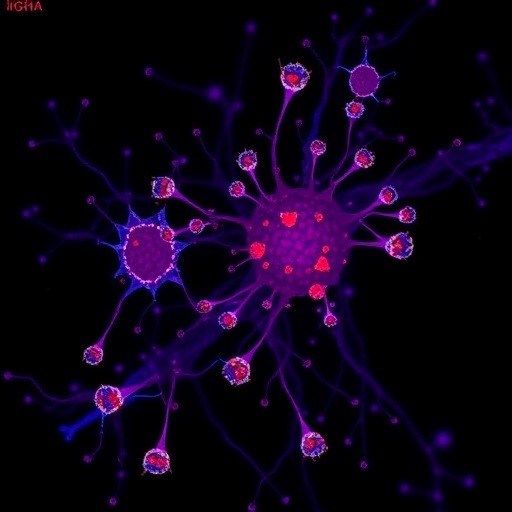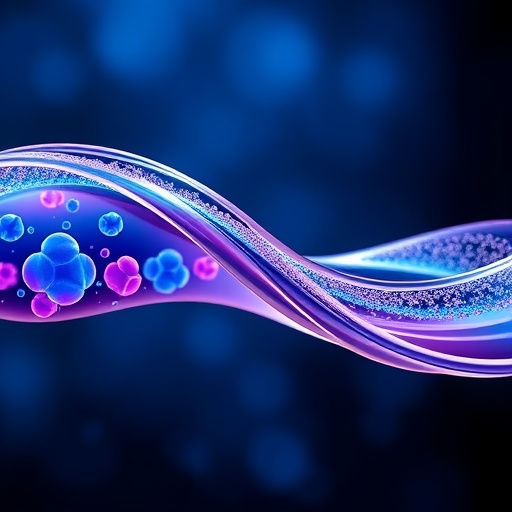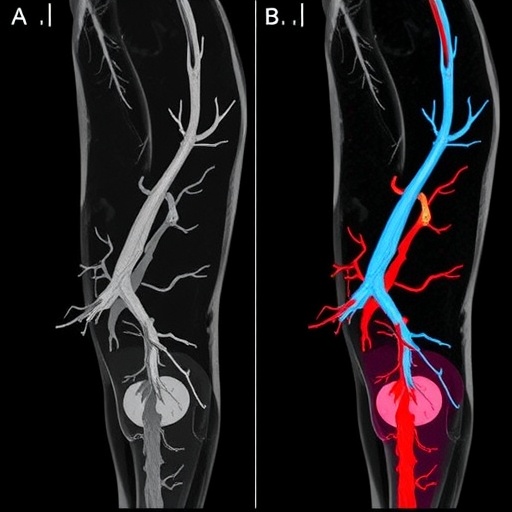PROTECT YOUR DNA WITH QUANTUM TECHNOLOGY
Orgo-Life the new way to the future Advertising by AdpathwayIn a landmark achievement that could reshape the landscape of natural product synthesis and pharmaceutical development, researchers led by Professor Lijia Wang at East China Normal University, in collaboration with Academician Yong Tang from the Shanghai Institute of Organic Chemistry, have unveiled a remarkably efficient nickel(II)-catalyzed asymmetric cyclobutanation methodology. This innovative approach, which strategically integrates a flexible “antenna” motif into traditional chiral bis(oxazoline) (BOX) ligands, propels the asymmetric synthesis of indole-based alkaloids to unprecedented heights of precision and efficiency. This breakthrough not only refines the art of constructing complex molecular architectures but also paves a new avenue for the total synthesis of pharmacologically significant quebracho indole alkaloids within dramatically shortened production timelines.
Indole alkaloids represent a fascinating subset of natural products known for their intricate spiroindoline frameworks and profound biological activities, including anticancer, antimalarial, and neuroregulatory properties. Their therapeutic potential is well-documented, particularly in alkaloids derived from the genera Strychnos nux vomica, Quebracho chinensis, and Malagasy sources. However, the complexity of these molecules — characterized by dense stereochemical configurations and challenging selectivity issues — has historically constrained synthetic accessibility, hindering extensive studies and drug development based on these compounds. Addressing these synthetic impediments demands an innovative approach that balances operational simplicity with stringent stereochemical control, utilizing affordable starting materials.
Building on this strategic necessity, the research team innovated a catalytic system featuring an “antenna” ligand design, which serves as a conceptual leap forward in the asymmetric catalysis domain. Traditional chiral BOX ligands, while valuable, suffer from diminished catalytic activity when engaging with heteroatom-substituted olefins, such as indole-derived enamines, largely due to the ligands’ susceptibility to interference from the heteroatoms coordinating with the central nickel catalyst. By engineering an “antenna” — essentially a flexible tether such as an n-propyl chain integrated into the ligand backbone — they successfully mitigated these coordination issues without compromising the chiral environment essential for enantioselective transformation. This nuanced ligand architecture dramatically enhances catalytic engagement and robustness, allowing the efficient cyclobutanation of challenging substrates under finely tuned conditions.
Optimizing the reaction parameters to use nickel triflate (Ni(OTf)_2) as the catalyst, mesitylene as solvent, and maintaining low temperature at -20 °C, the team realized near-quantitative yields reaching 99%, coupled with exquisite enantiomeric ratios (er) of up to 96:4. This level of chiral control is unprecedented for heteroatom-rich olefin substrates and illustrates the power of their antenna ligand design in enabling previously elusive transformations. The catalytic protocol displays remarkable tolerance to electronic variations on the indole ring and diverse substituents on the nitrogen atom, affirming its broad substrate scope and practical versatility in synthetic chemistry.
The practical utility of this methodology shines brightest in the scalable synthesis of cyclobutanes featuring all-carbon quaternary stereocenters, a typology notoriously challenging to construct enantioselectively. Utilizing N-methyltryptamine as the foundational substrate, the group deftly advanced to intricate pentacyclic architectures characteristic of quebracho alkaloid frameworks. This streamlined approach has culminated in the first asymmetric total syntheses of the three alkaloids (-)-eburine, (-)-eburcine, and (-)-minovine, alongside notably improved syntheses of other members such as (-)-vincadifformine and (-)-tabersonine. The route to (-)-kopsifoline D, in particular, boasts a 27-fold improvement in overall yield compared to previously documented synthetic pathways. Importantly, these syntheses achieve gram-scale preparation, a critical factor for downstream biological evaluation and pharmaceutical exploration.
This achievement stands as a testament to the innovative “push-pull electron butane stereoselective ring-opening/cyclization” tactic previously established by Professor Wang’s team— a strategy that masterfully orchestrates stereo- and regiocontrol in the construction of spiroindoline skeletons through well-tempered [2+2], [2+2+2], and [4+2] cyclization sequences. The mechanistic insights gleaned from extensive studies demystify the stereochemical outcomes and inform future catalyst and ligand development. The collaboration with Academician Tang further enforces a rigorous foundation in mechanistic understanding, which is integral to the fine-tuning of asymmetric transformations involving heteroatom-functionalized substrates.
Historically, the disparity between the reactivity of electron-rich olefins and their heteroatom-substituted counterparts presented a formidable challenge in methylene malonate cyclobutanation processes dating back decades. The new antenna ligand innovation breathes new life into this paradigm by counteracting the deleterious coordination interference of heteroatoms and enabling high efficiency and selectivity in these difficult systems. This advance is particularly notable given the prevalent role of indole derivatives as core motifs in medicinal chemistry and natural product synthesis, promising far-reaching impacts across academic and industrial pursuits.
Furthermore, the comprehensive synthetic routes developed exhibit significant improvements over previous methods, markedly shortening synthesis timelines from often over a dozen steps down to a concise 7-10 step sequence with improved overall yields ranging from 29% to 39%. This advancement transcends mere incremental improvement and offers synthetic chemists a powerful tool for accessing complex alkaloids with heightened speed, economy, and enantiopurity.
Looking ahead, this pioneering research sets a new standard in asymmetric catalysis and total synthesis methodology. The flexible antenna ligand concept is poised to influence ligand design philosophies across diverse catalytic platforms, extending beyond nickel catalysis to other transition metals. Moreover, the efficient access to complex indole alkaloids now enables more in-depth exploration of their biological profiles and accelerates the translation of these natural products into therapeutic leads, particularly in oncology and neurological disorder domains.
This work, published in the open-access flagship journal CCS Chemistry, exemplifies the impact of collaborative innovation, marrying detailed mechanistic insight with synthetic acumen to tackle longstanding challenges in complex molecule synthesis. The research was financially supported by the National Natural Science Foundation of China and the Fundamental Research Funds for the Central Universities, underscoring the strategic importance of fundamental chemical research.
The authorship credits include Pengjuan Li as first author, Pengcheng Yin as second author, alongside corresponding authors Professor Lijia Wang and Academician Yong Tang, illustratively highlighting the joint efforts bridging institutes at East China Normal University and the Chinese Academy of Sciences. The publication underscores not only a significant scientific advance but also a model of collaborative synergy fostering ground-breaking discovery.
Through this nuanced and effective catalytic strategy, the frontiers of asymmetric synthesis are broadened, offering chemists worldwide a pragmatic avenue to harness the structural complexity and biological potential of indole alkaloids. This success story not only enriches synthetic methodology but also propels the broader field of drug discovery and natural product chemistry toward new horizons.
Article Title: Accelerating Effect of Flexible “Antenna” Ligand-Enabled Enantioselective Cyclobutanation for the Concise Synthesis of Indole Alkaloids
News Publication Date: 1-Oct-2025
Web References:
– CCS Chemistry Journal: https://www.chinesechemsoc.org/journal/ccschem
– Chinese Chemical Society: https://www.chinesechemsoc.org/
Image Credits: CCS Chemistry
Keywords
Total synthesis, asymmetric catalysis, cyclobutanation, indole alkaloids, antenna ligands, spiroindoline skeleton, nickel catalysis, enantioselective synthesis, natural products, organic synthesis, ligand design, heteroatom-substituted olefins
Tags: antenna ligands in chemistryasymmetric synthesis of indole alkaloidschiral bis(oxazoline) ligandsefficient alkaloid production methodsinnovative approaches in alkaloid chemistrymolecular architecture in drug developmentnatural product synthesis advancementsnickel(II)-catalyzed cyclobutanationpharmacologically significant alkaloidsquebracho indole alkaloids synthesissynthetic accessibility of complex moleculestherapeutic potential of indole alkaloids


 22 hours ago
10
22 hours ago
10





















 English (US) ·
English (US) ·  French (CA) ·
French (CA) ·